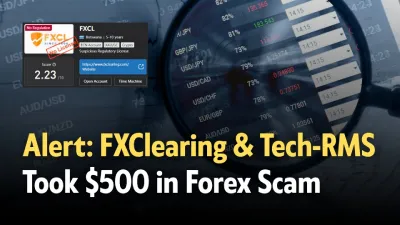SEC Secures $3.8M Settlement from Widow of Dead Ponzi Scheme Operator
Abstract:The Securities and Exchange Commission (SEC) has secured nearly $4 million from the widow of a deceased investment adviser who orchestrated a Ponzi scheme that defrauded more than 50 investors out of $29 million over more than a decade.

The Securities and Exchange Commission (SEC) has secured nearly $4 million from the widow of a deceased investment adviser who orchestrated a Ponzi scheme that defrauded more than 50 investors out of $29 million over more than a decade.
Widow Reaches Settlement with SEC
The SEC recently announced that Wendy Swensen, the widow of fraudster Stephen Swensen, agreed to pay $3.8 million to resolve the case. The funds will be distributed to victims through a court-appointed receiver.
The $29M Ponzi Scheme
Stephen Swensen promised clients guaranteed annual returns of at least 5% through his firm, Crew Capital Group. He claimed that investor money would be placed in bank loans and options tied to the S&P 500 index.
However, the truth is that Swensen used investor funds to cover personal expenses, including aircraft and real estate purchases. By posing as a registered investment adviser representative affiliated with several legitimate brokerage firms, many of the victims seeking retirement planning advice, he gained access to clients and funneled them into his fraudulent investment program.
The Ponzi scheme operated from 2011 until Swensens death in June 2022. Remarkably, the fraud continued even after his death, demonstrating the depth of deception involved.
Conclusion
While the widows $3.8 million settlement represents only a fraction of the total $29 million lost, it provides at least partial restitution for defrauded investors. The case highlights how Ponzi schemes can infiltrate legitimate financial channels and the lasting damage they inflict on unsuspecting victims.

Read more

How Scammers Trap Victims Again and Again | Break this Cycle at Once
Victims of financial scams are facing an even harsher reality as fraudsters increasingly exploit their desperation to recover lost funds. A growing number of cases reveal that criminals are posing as lawyers and law enforcement officers, luring victims into so-called “recovery scams” that compound their losses.

An investor lost $91M in Bitcoin to a Scam
A recent case involving the theft of 783 BTC (worth approximately $91.4 million) underscores the growing sophistication of cybercriminals targeting digital asset holders.

Alert: FXClearing and Tech-RMS Took $500 in Forex Scam
FXClearing and Tech-RMS scammed $500 via false promises and locked withdrawals. Discover key facts to protect yourself from this forex fraud.

5 Dangers of Trading with SecureFX You Can't Ignore
If you want to be an informed investor or trader in the forex market and avoid scams, you must read this article. This is the latest scam alert about SecureFX, which reveals the red flags of SecureFX. Check out the 5 major risks associated with SecureFX and stay alert.
WikiFX Broker
Latest News
SCAM ALERT! Swiss Watchdog FINMA Issues Fresh Warning on Suspicious Brokers
Is A Second Wave Of Inflation Coming?
Deepfake Scams Target Kiwi Investors on Facebook, WhatsApp
SEC Sues Carole Liston, Stock Purse Trading for $5.7M Fraud
The ‘Godfather of Japanese Stocks’ Scam Exposed Within Japan’s Chinese Community
Sony raises PlayStation 5 prices in US as tariff fears persist
Robinhood Sues Third Parties over Contract Business
How Does the Forex Market Work - An Insightful Guide
Scammers Used Big Names to Scam | She Lost Half a Million
Forex Trading for Beginners: A Complete Guide to How It Works
Rate Calc

